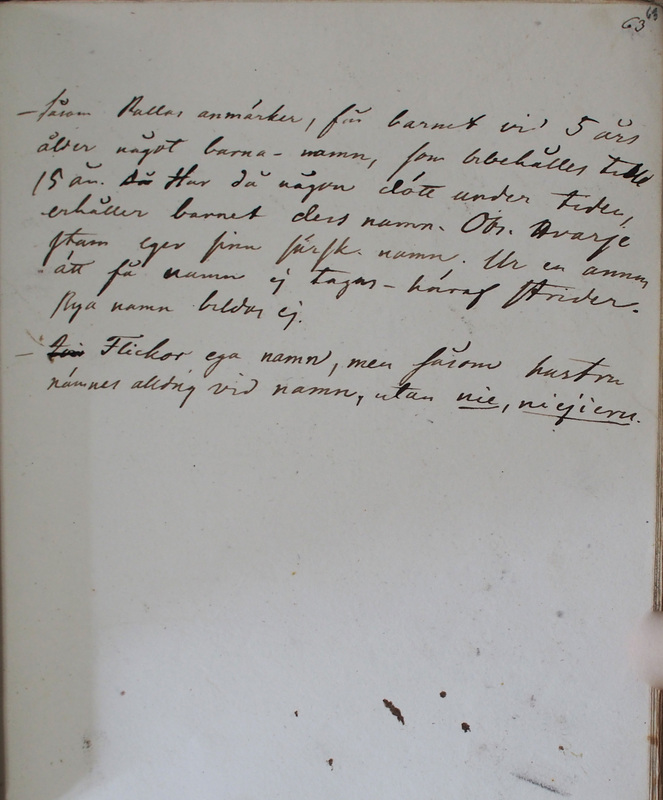Ethnographiska, historiska och statistiska anmärkningar. 063
Title
Ethnographiska, historiska och statistiska anmärkningar. 063
Description
|
Såsom Pallas
anmärker, får barnet vid 5 årsPallas 1776: 74; 1788: 99–100. As Pallas notes in his text, he relies on Zuev when writing about the Khanty and Nenets. Some of Zuev’s manuscripts were published posthumously. For names, see Zuev 1947: 65–67.
ålder något barna-namn, som bibehålles till 15 år. Har då någon dött under tiden, erhåller barnet ders namn. Obs. Hvarje stam eger sina särsk[ilda]. namn. Ur en annan ätt få namn ej tagas - häraf strider nya namn bildas ej. |
As Pallas remarks, a child gets a child-name at five years of age, and this is maintained until they are 15. If someone dies in the meantime, the child receives their name. NB: Every tribe owns its own specific names. The name must not be taken from another tribe – because of this new names are not formed. |
| Flickor ega namn, men såsom hustru nämnes alldrig vid namn, utan nie, niejieru. |
Girls have names, but as wives, they are never called by name, but nie, niejieru. |

